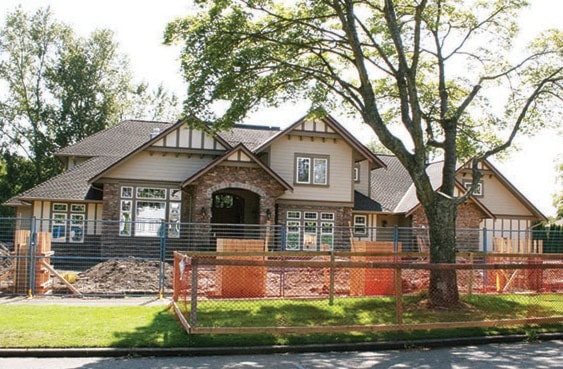What sets the Uplands apart from the rest of the municipality of Oak Bay when it comes to any building, exterior renovation or landscaping project?
A legislative act established in 1935 that protects the special character of that area.
The natural beauty and picturesque setting of the Uplands is protected by the Oak Bay Special Powers Act and subsequent municipal bylaws. Although it has been modified through time, the intent of the act remains in effect: to protect the park-like design and development standards first established by North America’s leading landscape architect at that time, John Charles Olmsted, and to sustain the environmental integrity of the municipality.
In Oak Bay, the municipality regulates building size and sites, but not architectural design. However, for the Uplands area the Oak Bay Special Powers Act and Bylaw 3545 define a separate process for reviewing and approving all building plans for the Uplands. Today, an advisory design panel made up of professionals in the fields of architecture, heritage and landscaping, has the job of reviewing all potential projects before they are approved by council.
“All municipalities have a right to have a design panel to advise their council on matters relating to building zones,” said Nigel Banks, who is a designer, associate member of the AIBC, and one of the members of the panel.
“Usually, in almost all contexts, that only applies to commercial and multi-unit institutional buildings,” Banks explained. “But Oak Bay is unique in that when the Uplands was created, the developer wanted Oak Bay council to have control over the Uplands, even though it is single-family dwellings.”
There are two basic steps in the review process that need to be addressed by any resident looking to build – whether it’s for a new house, an addition, exterior renovation, or just an accessory building. The first is to present the proposed development concept to the panel – Banks says that panel members recommend residents attend an Advisory Design Panel meeting prior to presenting their own plans.
“That way they can hear some of the comments and suggestions we make, get an idea of what you can and can’t do,” Banks explained.
Once the panel has reviewed a design project, the resident will normally take the advice into consideration and come back with a final application. Then the design panel will send its comments to the Committee of the Whole, either recommending or declining approval.
“For anyone who is eager to get underway, the process is time-consuming,” Banks said. “It adds a month to your project. And once a project gets underway, the building inspector then gets to enforce what was approved.”
Banks says only one other place in B.C. has the same type of process for controlling the form and character of the residential area, and that is Shaughnessy in Vancouver.
“When the Uplands was created, it was perceived to be an extraordinary development, and in reality it probably is,” he mused.
Oak Bay’s Advisory Design Panel meets on the first Tuesday of each month and forwards its recommendations to council by way of the Committee of the Whole.
